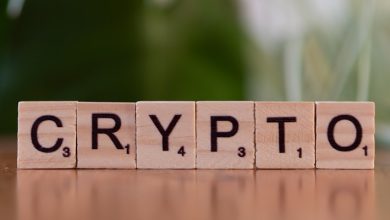What is a Fake DeFi Platform? How to Avoid It

- Understanding the concept of a fake DeFi platform
- Common characteristics of fake DeFi platforms
- Red flags to look out for when evaluating a DeFi platform
- Tips for verifying the legitimacy of a DeFi platform
- Real-life examples of fake DeFi platforms and their consequences
- Steps to take to avoid falling victim to a fake DeFi platform
Understanding the concept of a fake DeFi platform
Understanding the concept of a fake DeFi platform is crucial for investors looking to participate in decentralized finance. Fake DeFi platforms are fraudulent websites or applications that mimic legitimate DeFi projects in order to deceive users into investing their funds. These platforms often promise high returns or low-risk investments, but in reality, they are scams designed to steal users’ assets.
One common tactic used by fake DeFi platforms is to create a website that looks nearly identical to a legitimate DeFi project. They may use similar branding, logos, and even copy the content from the real project’s website. This can make it difficult for investors to distinguish between the real and fake platforms, especially if they are not familiar with the legitimate project.
Investors can avoid falling victim to fake DeFi platforms by conducting thorough research before investing their funds. They should verify the legitimacy of a platform by checking for reviews, auditing reports, and information about the team behind the project. Additionally, investors should be wary of platforms that promise guaranteed returns or use aggressive marketing tactics to attract users.
Common characteristics of fake DeFi platforms
When it comes to identifying fake DeFi platforms, there are some common characteristics to watch out for. These platforms often promise high returns with little to no risk, which is a major red flag. Additionally, fake DeFi platforms may lack transparency in their operations and team members, making it difficult to verify their legitimacy.
Another common characteristic of fake DeFi platforms is the absence of a clear roadmap or whitepaper detailing their project goals and strategies. Legitimate DeFi projects typically have a well-defined roadmap that outlines their plans for development and growth.
Furthermore, fake DeFi platforms may have poorly designed websites or lack security features to protect user funds. It’s important to thoroughly research a DeFi platform’s website and security measures before investing any funds to avoid falling victim to a scam.
Red flags to look out for when evaluating a DeFi platform
When evaluating a DeFi platform, it is crucial to be aware of red flags that may indicate a fake or fraudulent platform. There are several key indicators to look out for in order to protect your investments and avoid falling victim to scams. One red flag to watch for is a lack of transparency in the platform’s team members and developers. If the platform does not provide clear information about the individuals behind it, this could be a sign that they are trying to hide something.
Another red flag is unrealistic promises of high returns with low risk. If a DeFi platform is guaranteeing unusually high profits with little to no risk involved, it is likely too good to be true. Additionally, be wary of platforms that have a poorly designed or non-functional website. Legitimate DeFi platforms typically invest in creating a professional and user-friendly website, so a subpar site could be a warning sign.
Furthermore, be cautious of platforms that pressure you to invest quickly or make impulsive decisions. Scammers often use tactics to create a sense of urgency in order to manipulate investors into making hasty choices. Lastly, always do thorough research on any DeFi platform before investing your money. Look for reviews, testimonials, and independent analyses to verify the platform’s legitimacy. By staying vigilant and being aware of these red flags, you can protect yourself from falling prey to fake DeFi platforms and safeguard your investments.
Tips for verifying the legitimacy of a DeFi platform
When it comes to verifying the legitimacy of a DeFi platform, there are several tips that can help you avoid falling victim to a fake platform. One of the first things you should do is research the team behind the platform. Look for information about the team members, their experience in the industry, and whether they have been involved in any previous successful projects.
Another important step is to check the platform’s security measures. Make sure they use secure smart contracts and have undergone third-party security audits. You should also look for information about the platform’s token and how it is distributed. Be wary of platforms that have a large percentage of tokens held by a small number of individuals.
Additionally, you should look for reviews and feedback from other users who have used the platform. This can give you valuable insights into the platform’s reputation and whether it is trustworthy. Finally, if something seems too good to be true, it probably is. Be cautious of platforms that promise high returns with little risk.
Real-life examples of fake DeFi platforms and their consequences
Real-life examples of counterfeit DeFi platforms serve as cautionary tales for investors. One such platform, PonziSwap, promised high returns on investment through liquidity pooling. However, once users deposited their funds, the platform disappeared, taking all the assets with it. This fraudulent scheme resulted in significant financial losses for unsuspecting individuals.
Another instance is YieldFarms, which claimed to offer sustainable farming practices for decentralized finance. Despite its eco-friendly image, the platform turned out to be a scam, with no real farming activities taking place. Investors who trusted YieldFarms with their money ended up empty-handed, highlighting the risks associated with fake DeFi projects.
Furthermore, RugPull Finance lured users with promises of innovative financial products and services. However, once investors poured their money into the platform, the creators executed a “rug pull,” draining all the liquidity and disappearing without a trace. This deceptive tactic left many individuals devastated and wary of engaging with DeFi platforms in the future.
Steps to take to avoid falling victim to a fake DeFi platform
To avoid falling victim to a fraudulent DeFi platform, there are several steps you can take to protect yourself and your investments. Firstly, always conduct thorough research on any platform before providing any personal information or funds. Look for reviews, ratings, and feedback from other users to gauge the platform’s reputation and legitimacy.
Secondly, verify the team behind the DeFi platform. Check their credentials, experience, and online presence to ensure they are real and trustworthy. Scammers often use fake identities or hide behind anonymity, so this step is crucial in determining the platform’s authenticity.
Additionally, be cautious of platforms that promise high returns with little to no risk. If an offer sounds too good to be true, it probably is. Legitimate DeFi platforms operate within the bounds of reality and do not make outrageous claims or guarantees.
Furthermore, always use secure and reputable wallets when transacting on DeFi platforms. Avoid sharing your private keys or passwords with anyone, and enable two-factor authentication for an extra layer of security.
Lastly, trust your instincts. If something feels off or suspicious about a DeFi platform, it’s better to err on the side of caution and walk away. Remember, protecting your investments is paramount in the world of decentralized finance.



